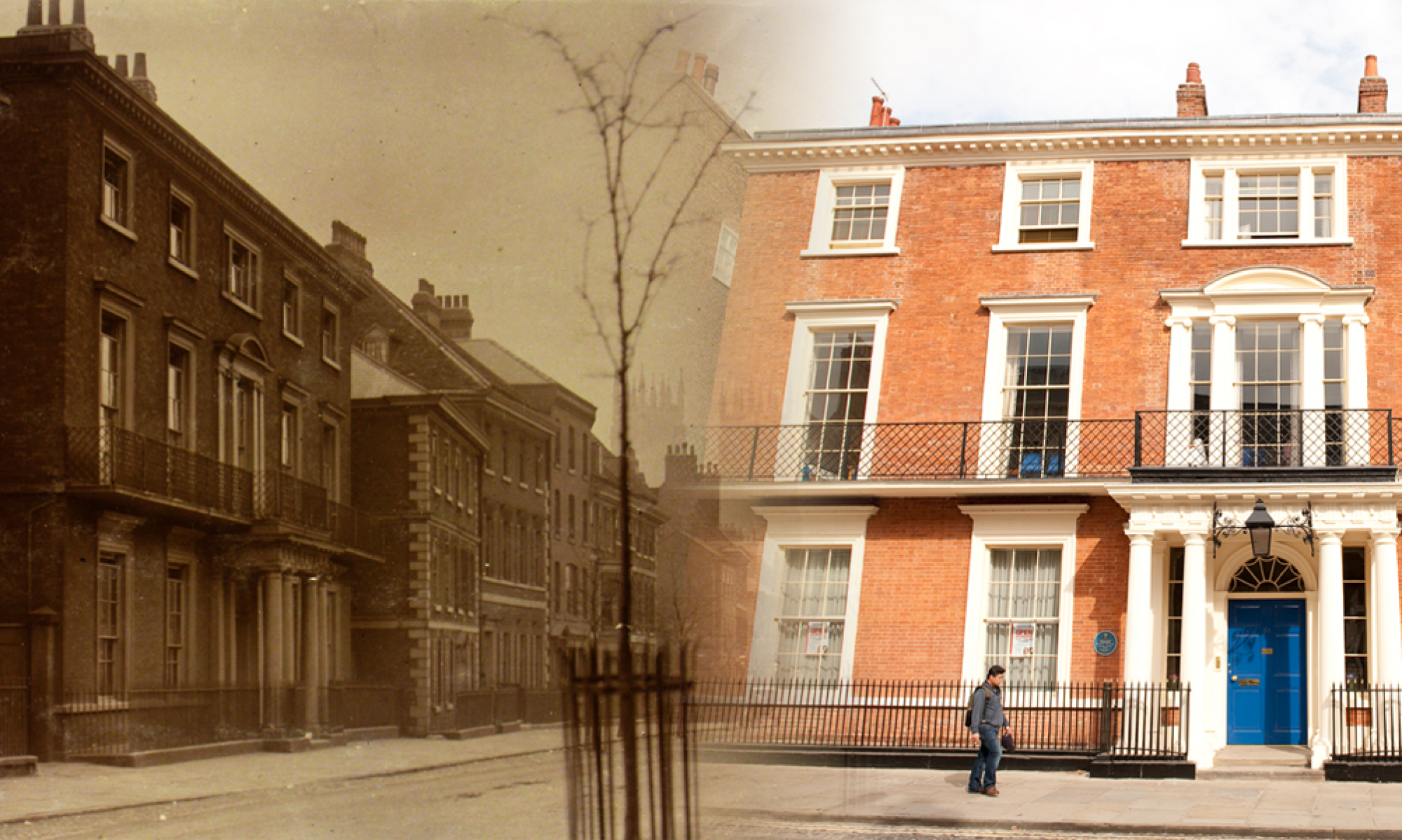Thanks to Claire, one of the volunteers, for researching this post.
It’s National Insect Week!
Interestingly, over one million species and insects have been described and named worldwide. The UK in itself have more than 24,000 species and we can find insects in almost every habitat. They can be pollinators, predators, pests, parasites and prey.
We have, for many years now, had the benefit of a wonderfully active Natural History Society with many facts, figures and information having been collated.
Images of butterflies drawn by students – various species including: Eye Hawk Moth, and drawings of the same in pupa state (H Richardson 1878), Blackhead Bunting, Red Admiral and a small Tortoiseshell butterfly, The Ringlet (from an album probably assembled by Hugh Richardson between 1876 and 1884)
The Ringlet has to be a personal favourite, the detail is astonishing, as are most within this “scrap book”.
The Natural History Journal of 1892 has an interesting piece relating to dragonflies, a lovely story of EW Allen shouldering his satchel and venturing on a 4 mile hike on a hot day to his chosen hunting ground. Interestingly, he states the New Forest as being a very rewarding area to investigate. At Brockenhurst he managed to add 200-300 specimens to his collection.
1947 saw the creation of a wonderful set of Butterfly records, including details of some rare finds. This was the culmination of a 2 year study by the Natural History Society incorporating contributions from new boys, senior boys, Old Scholars and teachers. A very thorough and detailed account including some lovely photographs of paintings by C.J.S of the Comma and Camberwell Beauty. A painting by Douglas. M Sloan of a Brimstone, of the family Pierdae, sub family Coliadinae stands out also as a rare find even though “it lives the longest of all British butterflies”. It has become less rare over the recent years and can be seen reasonably frequently at Askham Bog.
Clouded Yellow
In 1948 a visit to Hutton Le Hole was arranged. 12th – 19th April 10 boys stayed at Barmoor, looked after by Mr and Mrs Happold. Whilst lovely pictures and much research took place, the boys were particularly interested in remaining well fed and “taking their candles with them at 10.30pm and shortly after not a sound was heard”. John Mounsey created an interesting report on butterflies and moths which was incorporated into the National History Club magazine.
1951 – 20 boys visited Borrowdale and stayed at CHA Hostel detailing their finds in a log book. We find the following in relation to a stonefly, and their habitat details.
Also in 1951, a visit to Askham Bog gave us a wonderful drawing of the life cycle of pond life in stagnant water.
The Natural History Junior Diary 1969 holds interesting accounts relating to all nature projects at the time, the care of which was managed by the school children. They made diary entries to capture detail. One such account is that of the locust: on the 23rd January PJ Higson noted the progress the locust had made in terms of development ,feeding habits and “lights out” at 6pm. Following on, MB Barber noted that they were transferred to the adult cage and fed their “white worms”.
May/June1970 saw a visit to Strensall Common. A very intricate and interesting hand drawn picture of a hoverfly along with detailed observations are available “3 pairs of legs like all insects, one pair of wings and a stump of hind wing like all flies”. Also picture is the head area of a Wolf Spider, apparently “Strensall is particularly good for spider enthusiasts”.
















The illustration labelled “Brimstone” is actually a Clouded Yellow butterfly and is so named in the original pamphlet. Can this be corrected? I may be wrong, but I believe that it may have been the Happolds who looked after the boys at Barmoor, parents of my contemporary Edmund, not Hoppolds?
Dear John
Thanks very much for your comment, I’ve corrected the article.
Jenny
Thanks Jenny. I’m a happy bunny now! John.